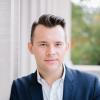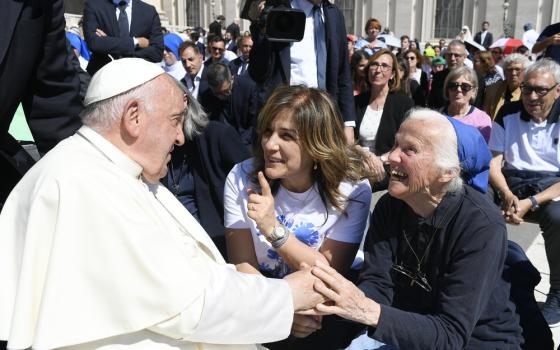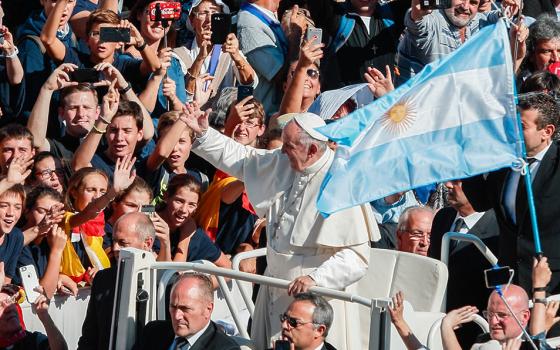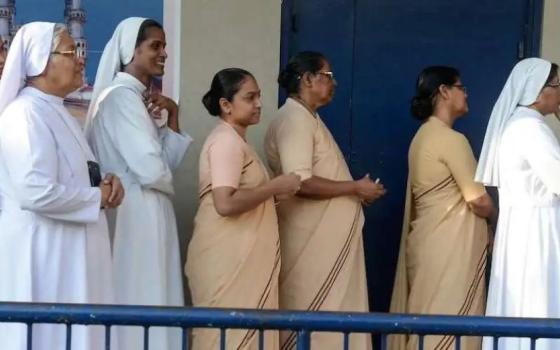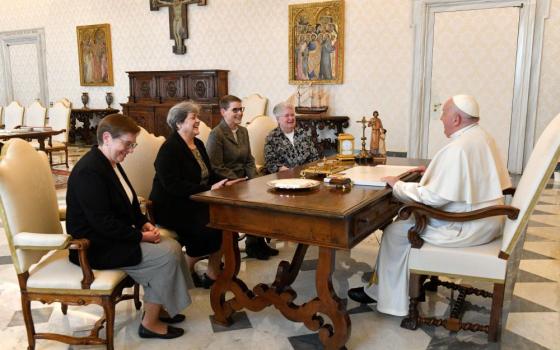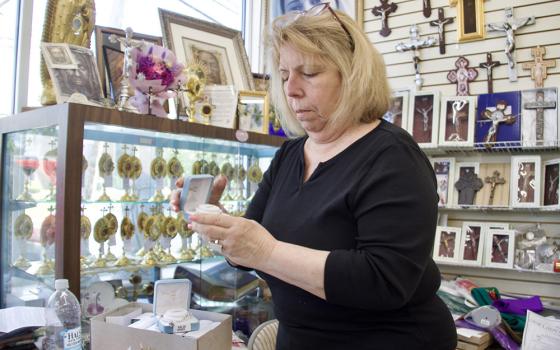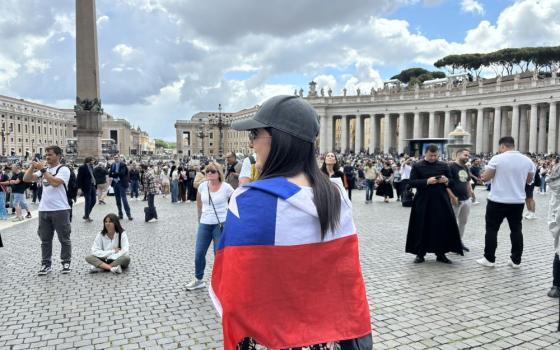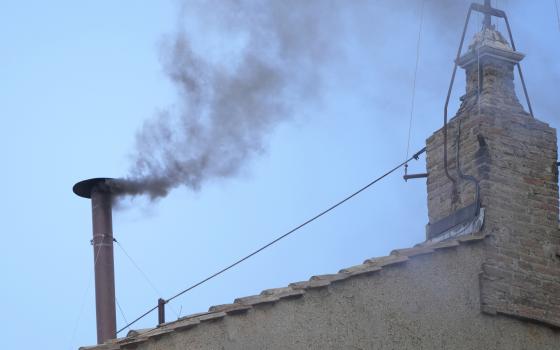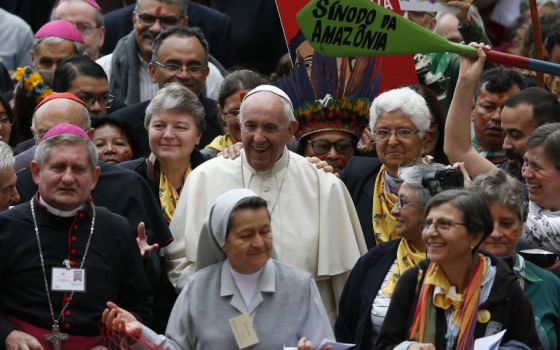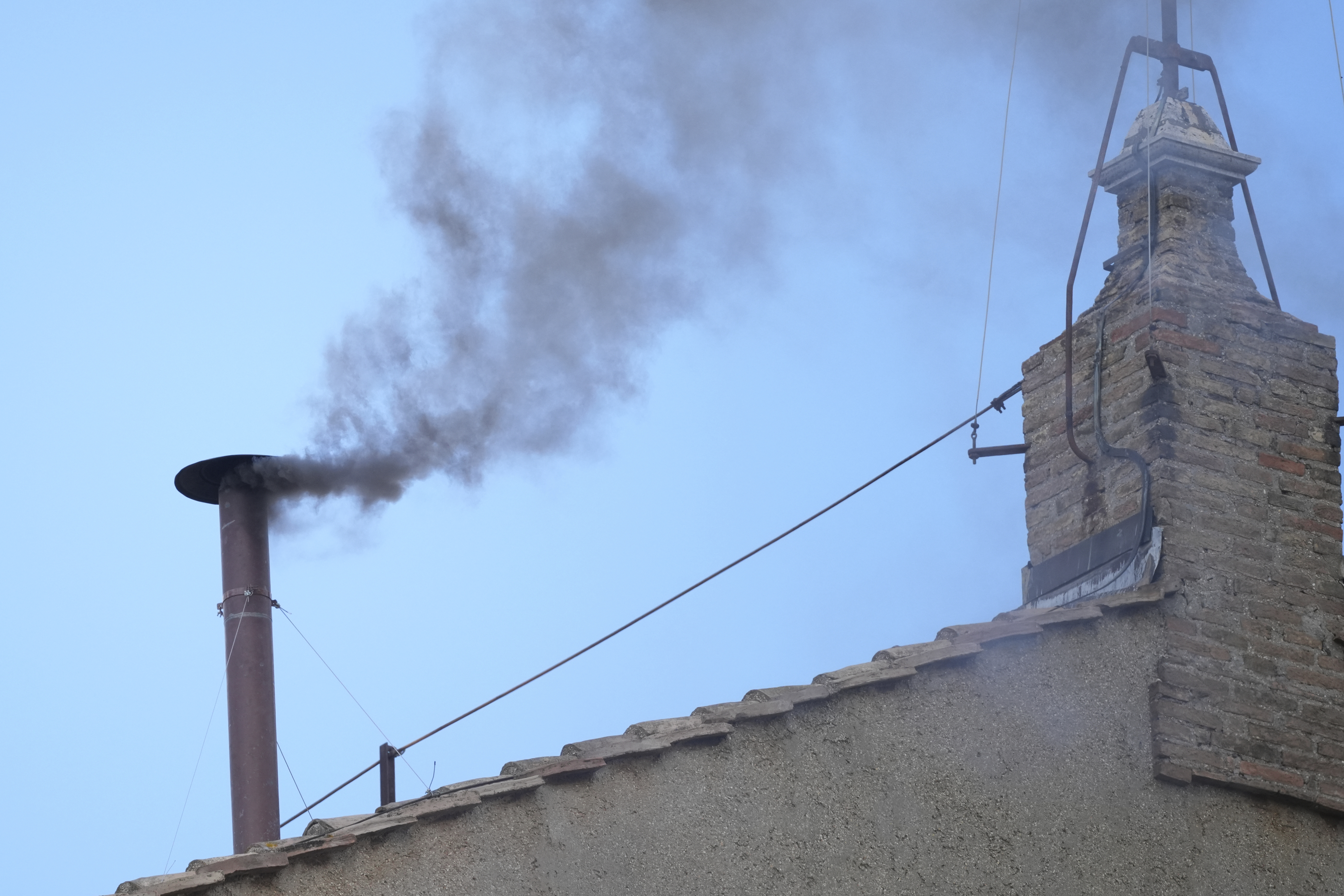
Black smoke billows from the chimney of the Sistine Chapel during the conclave to elect a new pope, at the Vatican, Thursday, May 8, 2025. (AP/Andrew Medichini)
After three rounds of voting, cardinals have yet to elect a successor to Pope Francis.
Black smoke billowed again from the Sistine Chapel chimney about 11:50 a.m.on May 8, sending another signal to the world that no new pope had been elected in the effort to elect a successor to Pope Francis.
The smoke signal was the second in less than 24 hours and took place after three rounds of voting. Ballots are burned twice a day — one after two rounds of morning voting and again in the afternoon.
Last night's black smoke came at 9 p.m. local time, 90 minutes later than expected, after 133 cardinals took oaths of secrecy and were locked into the Sistine Chapel.
Two male religious react in front of a screen displaying a live feed of the chimney on the Sistine Chapel at the Vatican May 8, 2025, the second day of the conclave to elect the new pope. (OSV News/Reuters/Marko Djurica)
Retired Cardinal Raniero Cantalamessa, 90, delivered a meditation prior to the initial round of voting. Cantalamessa's reflection, which was reportedly close to an hour — combined with the large number of cardinal-electors — resulted in a much lengthier wait time for the initial round of balloting.
"The second day is when the voting gets real and everything moves fast. The first vote was a big sort, a shakeout where you finally see what the electors are really thinking, not just what they are saying," veteran Vatican journalist David Gibson told the National Catholic Reporter. "Then it gets real."
"If someone emerges as a front runner you start to think, 'Do I really want to see him as pope?' And maybe you shift to another candidate who you may not initially have backed but who you could live with or even love as pope," said Gibson, who serves as the director of Fordham University's Center for Religion and Culture.
"In the second and third rounds things really coalesce," he explained. "Cardinal electors are generally strategic voters not dead enders."
Thousands of pilgrims again returned to St. Peter's Square, where all eyes remained fixed on the rooftop chimney, along with the massive jumbotrons in the piazza with a live camera feed on the tiny vent.
No new pope was expected to be elected on the early rounds of voting during a contest with a range of front-runners and few clues as to who might emerge as the next pontiff. The earliest predictions for a successful election for a new pope have hinted at Thursday evening (May 8) after five ballots or on Friday morning (May 9).
Francis died April 21 at age 88. He was elected March 13, 2013, after five votes in a two-day conclave. His predecessor, Pope Benedict XVI, was elected April 19, 2005, after four votes in two days. Benedict resigned as pope Feb. 11, 2013, at age 85; he died Dec. 31, 2022, at age 95.
A seagull rests next to the chimney of the Sistine Chapel on a screen in St. Peter’s Square at the Vatican May 8, 2025, as people watch for smoke on the second day of the conclave. (CNS/Lola Gomez)
With 133 eligible cardinals participating in this conclave, a candidate must receive a two-thirds majority vote — 89 — to be elected.
A person rests in St. Peter's Square at the Vatican May 8, 2025, the second day of the conclave to elect the new pope. (OSV News/Reuters/Marko Djurica)
Over nearly two weeks of pre-conclave meetings, cardinals held vigorous debates on the future of the Catholic Church at a moment where the 1.4 billion member institution is at a crossroads. The cardinals, whose chief job it is to elect a new pope, must now decide whether to continue the late pope's reform agenda or to initiate a course correction.
The cardinals will now have lunch together inside the Vatican guesthouses where they are residing and followed by a brief rest, they will return to the Sistine Chapel to resume voting. Until a new pope is elected, the cardinals are barred from having any communication with the outside world.
The National Catholic Reporter's Rome Bureau is made possible in part by the generosity of Joan and Bob McGrath.
NCR is an independent nonprofit and relies on support from readers like you, especially at this crucial moment in church history. Please donate here to the Spring Fund Drive.
Advertisement
